Which of the following statements are true?
(i) A line segment has no definite length.
(ii) A ray has no end point.
(iii) A line has a definite length.
(iv) A line ![]() is the same as line
is the same as line ![]() .
.
(v) A ray ![]() is the same as ray
is the same as ray ![]() .
.
(vi) Two distinct points always determine a unique line.
(vii) Three lines are concurrent if they have a common point.
(viii) Two distinct lines cannot be both parallel to the same line.
(ix) Two intersecting lines cannot be both parallel to the same line.
(x) Open half-line OA is the same thing as ray ![]()
(xi) Two lines may intersect in two points.
(xii) Two lines I and m are parallel only when they have no point in common.
(i) False
Because a line segment has two end points with a definite length.

(ii) False
Because a ray has one end point and infinitely extends in one direction.
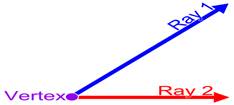
(iii) False
Because a line has no beginning point or end point therefore a line has not definite length.
![]()
(iv) True
Because a line has no beginning point or end point therefore line ![]() is the same as line
is the same as line ![]() .
.

(v) False
Because a ray has one end point and infinitely extends in one direction therefore ray ![]() is not same as the ray
is not same as the ray ![]() .
.
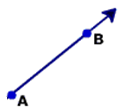
In this ray ![]() has the end point A.
has the end point A.
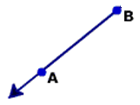
In this ray ![]() has the end point B.
has the end point B.
(vi) True
Because a line has no beginning point or end point.
![]()
(vii) True
Because the set of lines intersect at the same point called concurrent lines.
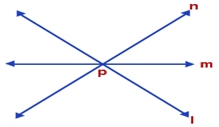
Lines l, m, and n are concurrent at the common point P.
(viii) True
Two lines in a plane that do not intersect or touch each other at any point, they are called parallel lines.

(ix) True
Because parallel lines never intersect or cross one another.
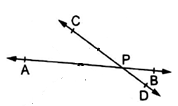
(x) False
Because half-line is the set of all points on a line on a given side of a given point of the line while ray is a part of line with one end point and infinitely extends in one direction.
(xi) False
Because two lines intersect at only one point.
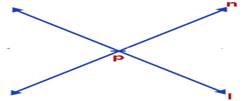
Lines l and n intersect at only one point P.
(xii) False
Two lines are said to be parallel when
(a) they never meet
(b) they are coplanar
